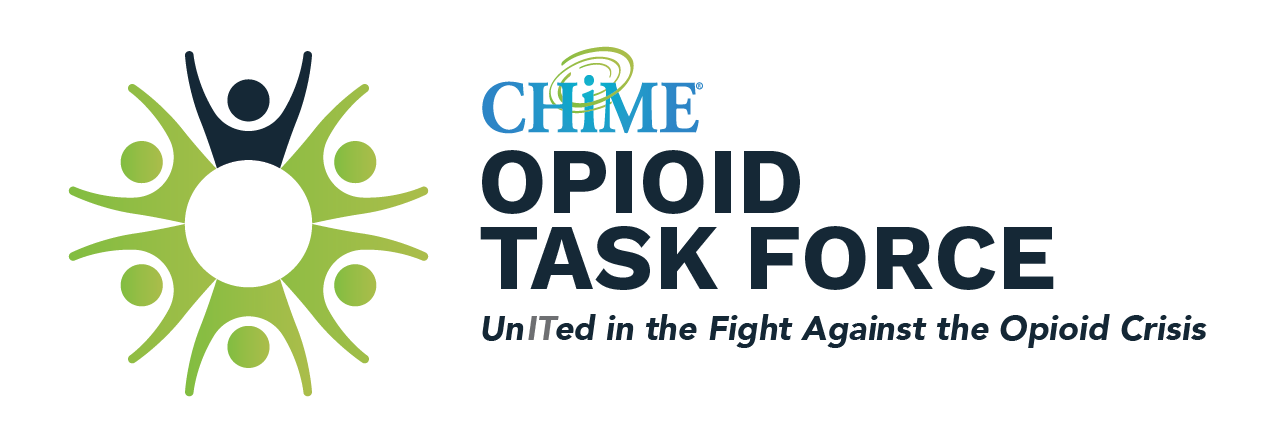Download Full PDF The Current State of Opioid Related Capabilities in Enterprise EHRs: Availability and Level of Technical Difficulty
Watch Podcast Episode: Clinical Advisory Panel: Current State of Opioid-Related Capabilities in Enterprise Electronic Health Records
INTRODUCTION
The U.S. opioid overdose epidemic is one of the most significant public health crises of our time.
Successfully addressing the problem requires a comprehensive and multi-faceted approach involving
all levels of prevention, including working to reduce the incidence of opioid use disorder (OUD)
through responsible prescribing of opioid pain medications, initiating OUD treatment with medication
and counseling, and implementing harm reduction to prevent overdoses, morbidity, and mortality
secondary to drug use. The enterprise electronic health record (EHR) system is an under-utilized
critical tool in the fight.
Opioid-related capabilities available today in EHRs can save lives by preventing misuse, reducing
(and more effectively treating) overdoses, and proactively decreasing the risk of opioid addiction.
The CHIME Opioid Task Force (OTF) has identified 13 essential EHR capabilities that span five distinct
categories: education, monitoring, alerts, prescribing support, and screening. We believe these are
capabilities that every enterprise EHR vendor should offer – and that every hospital and health system
should prioritize, implement, and provide training for.
[Download Full PDF to view chart: CHIME OTF’s Thirteen Essential Opioid-Related EHR Capabilities (by Category)]
Awareness and Degree of Difficulty Challenges
Maximizing the value of the EHR to combat the opioid overdose epidemic is essential. Clinical teams
and IT leaders in your organization should be aware of all the pertinent capabilities available in your
EHR – and then work together (along with your EHR vendor) to fully implement and configure that
functionality so it can be correctly embedded in the right workflows.
Additionally, many of the capabilities listed in the table above require at least some degree of
customization to produce the intended results. For example, your EHR system might have the ability
to include opioid precautions and education in the patient discharge summary when opioids are
prescribed, but is it automated to launch every time? Does the summary go to the right patient(s)?
Similarly, your EHR vendor may offer a dashboard for opioid prescribing practices, but is it usable and
fully integrated? Does it show actionable information that clinicians can use to guide their decision
making in real-time without leading to alert fatigue? The level of effort required from a technical
customization and configuration perspective can vary widely depending on the type of functionality
and the vendor’s approach.
CHIME OTF’S SURVEY OF THREE LEADING EHR VENDORS
Failure to implement and customize the 13 essential capabilities due to lack of awareness or coordination
between clinical and IT stakeholders may have fatal consequences for patients. Given the importance
of the functionality defined above and the urgency of the opioid crisis, the CHIME OTF surveyed three
of the most-highly used EHR vendors to get a better understanding of 1) the scope of opioid-related
functionality that is available in enterprise EHRs today, and 2) the level of effort required to implement
those capabilities correctly from a technology perspective.
Survey Methodology
From May until Oct of 2023, the CHIME OTF conducted interviews with a representative from each EHR
vendor who was intimately familiar with the opioid-related capabilities in their product. All follow-up
questions and clarifications were addressed via email following the initial interviews. Each vendor
provided a final data update in August 2024 to ensure the accuracy and relevance of the information
at the time of publication.
The responses provided by the vendors represent a snapshot in time. Opioid-related capabilities in all
three vendor solutions can and likely will evolve rapidly. The CHIME OTF acknowledges that “level of
effort” is an inherently subjective term, and as such, the experience of individual organizations that
implement these capabilities may vary. For each of the 13 capabilities listed, there are critical change
management efforts that need to accompany the technical work. The score for “level of effort” in this
survey self-reported by each vendor represents solely the technical effort required to customize and
configure the functionality.
Findings
The results of the CHIME OTF’s survey serve as an important reminder about two key realities.
Firstly, the level of effort needed for the technical customization and configuration of opioid-related
functionality can vary. Work with your vendor and your IT/informatics team to maximize your unique
workflow. Given the importance of these 13 essential capabilities as a whole, hospital and health
system leaders need to account for the time and resources required so that all available capabilities
are implemented correctly. If any capabilities listed above are not currently offered in your enterprise
EHR, work with your vendor and IT team to establish a firm timeline of when your organization can
expect to have them.
Secondly, vendors approach opioid-related capabilities differently. As such, the technical “degree of
difficulty” – while relative – will vary from capability-to-capability and from vendor-to-vendor.
Underscoring these two key points, the survey specifically found:
- The vendors responded with the same score for only two of the 13 capabilities (15%).
- Six of the 13 capabilities (46%) received at least one “3) more effort / expertise” or at least one “4)
- requires vendor / future.”
- Only one capability was scored as “1) little effort / pre-built” by all the vendors. Only two additional
- capabilities received multiple scores of “1) little effort / pre-built.”
- Overall, the two capabilities that were scored with the highest “degree of difficulty” (each with an average score of 2.67) were:
- Clinical Decision Support that guides providers in proper prescribing of opioids and managing high risk patients.
- Risk screening tools for patients with overdose or addiction history (e.g., Opioid Risk Tool, SOAPP, DAST).
THE BOTTOM LINE
Opioid-related capabilities available today in enterprise EHRs can save lives. However, getting the
most out of the EHR’s massive potential to combat the opioid crisis requires that leaders across all
areas of your organization have a strong understanding of what functionality is currently available
and possible in the system. Your clinical and IT leaders must also know the level of technical effort
required to correctly implement all 13 capabilities, and then work together – along with your core
vendor – to ensure that functionality is customized in a way that maximizes informed decision-making.
Success will also involve non-technical change management (e.g., cultural, and operational) that may
be significantly more challenging than the technical effort required.
This survey regarding current opioid-related capabilities in leading EHR systems represents a
snapshot in time. The opioid crisis is continuing to evolve, and technology needs to evolve accordingly.
Functionality can change. Clinical and IT stakeholders in your organization must understand what is
available in your EHR today – and the best ways to leverage that functionality – while also working
closely with your vendor to understand their plans.
The 13 capabilities outlined in this article should be strongly considered. They are vital to fighting
this devastating public health crisis and saving lives.
[Download Full PDF to view chart: CHIME OTF’s Scoring of Each Vendor’s Opioid-Related Capabilities]
Created by the CHIME Opioid Task Force Clinical Advisory subcommittee with special contributions
from: Jason Fortin, Sean Kelly, MD, Patty Lavely, John Lee, MD, Greg Polston, MD, Jonathan Siff, MD,
and Scott Weiner, MD, MPH.

